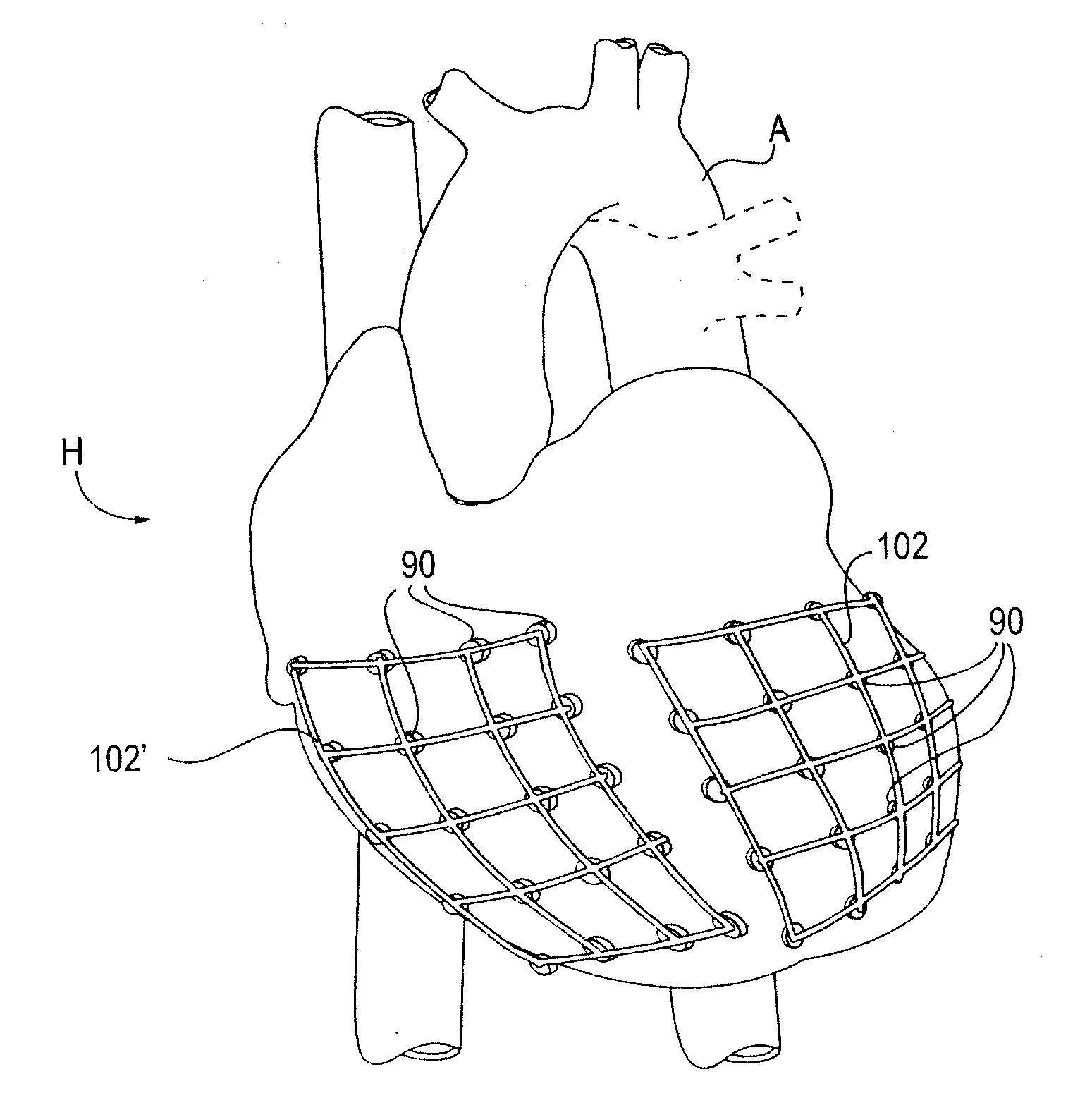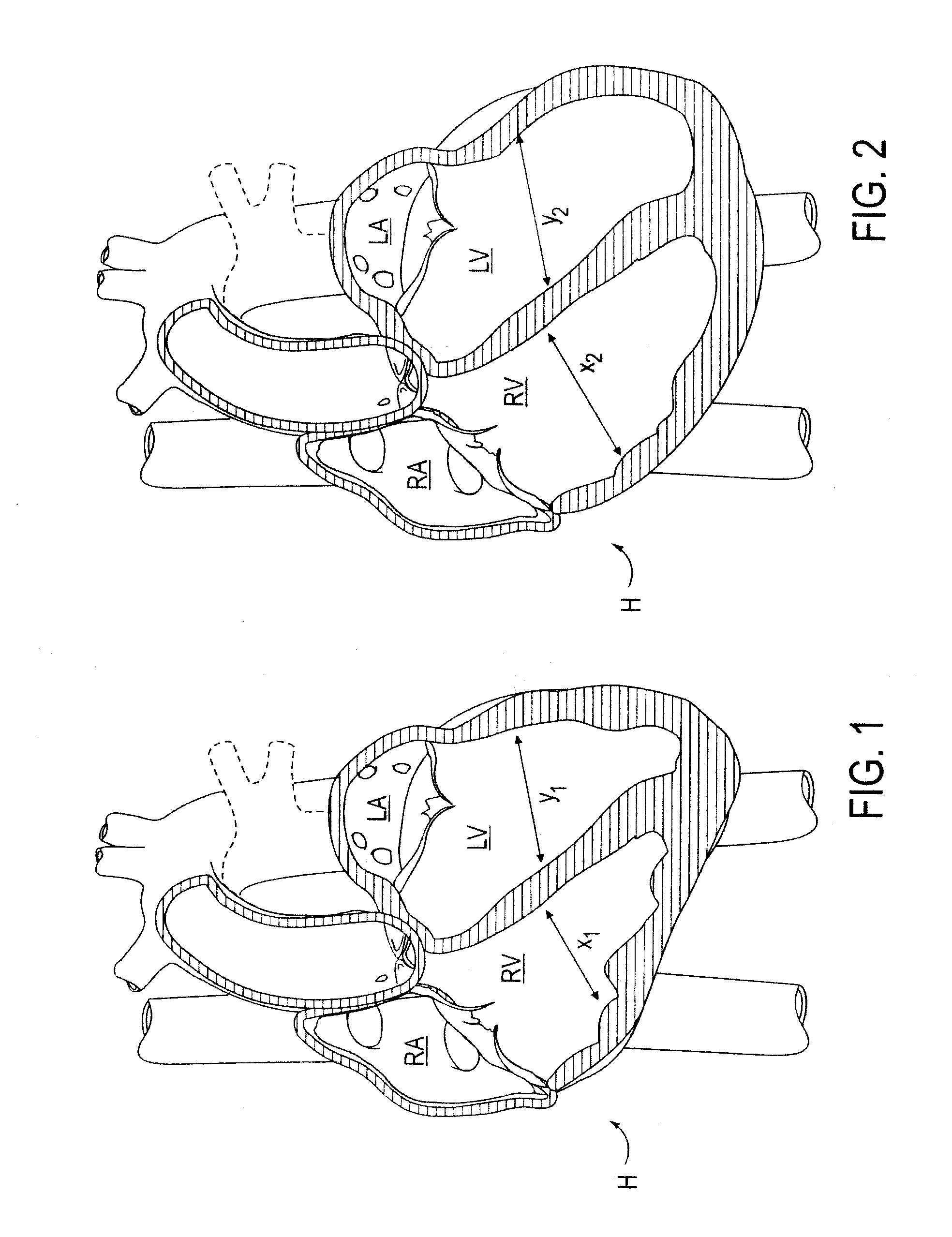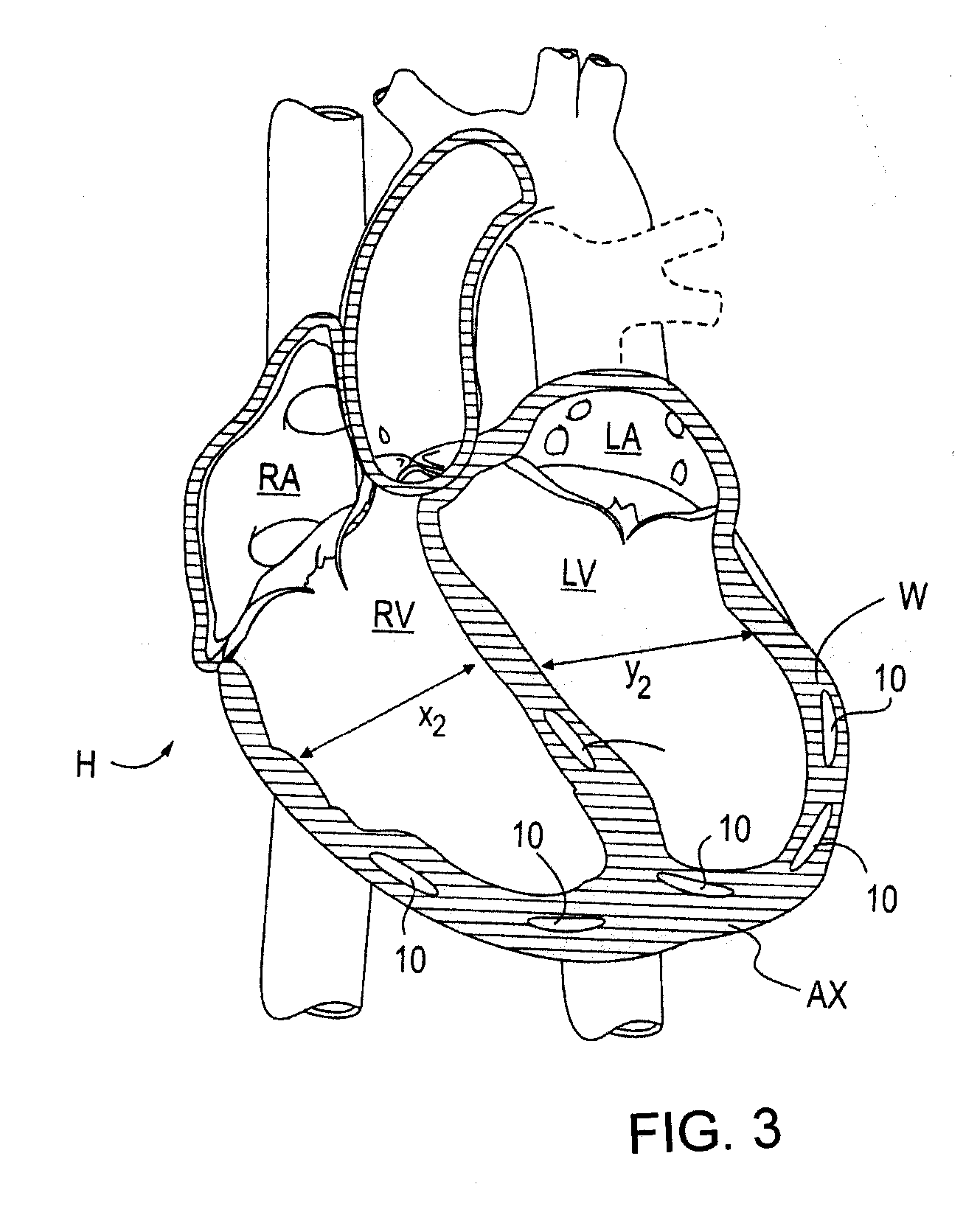Methods and systems for cardiac remodeling via resynchronization
a technology of resynchronization and cardiac remodeling, applied in the field of cardiac stimulation devices, can solve the problems of increasing the enlargement of the heart, the deterioration of the myocardium, and the progressively debilitating course of disease, so as to increase the cardiac output of the heart, increase the contractibility of the ventricles, and increase the stroke volume
- Summary
- Abstract
- Description
- Claims
- Application Information
AI Technical Summary
Benefits of technology
Problems solved by technology
Method used
Image
Examples
Embodiment Construction
[0062] There is a need for alternative treatments applicable to both early and later stages of heart failure to correct pumping insufficiency due to distension of the heart thereby stopping the progressive nature of the disease or more drastically slowing the progressive nature of congestive heart disease. It is also desired that such therapies require minimal manipulation of the heart, be available to a broad spectrum of patients with various degrees of heart failure, be cost effective, safe and efficient. At least some of these objectives will be met with the embodiments disclosed herein.
[0063] As discussed above, there is also a need to treat interventricular conduction defects. Given the demonstrated feasibility of four-chamber cardiac pacing, and the availability of techniques for sensing natural cardiac signals and mechanical events, systems and methods are provided herein for adapting treatment of the cardiac condition of a patient with congestive heart failure so as to prov...
PUM
 Login to View More
Login to View More Abstract
Description
Claims
Application Information
 Login to View More
Login to View More - R&D
- Intellectual Property
- Life Sciences
- Materials
- Tech Scout
- Unparalleled Data Quality
- Higher Quality Content
- 60% Fewer Hallucinations
Browse by: Latest US Patents, China's latest patents, Technical Efficacy Thesaurus, Application Domain, Technology Topic, Popular Technical Reports.
© 2025 PatSnap. All rights reserved.Legal|Privacy policy|Modern Slavery Act Transparency Statement|Sitemap|About US| Contact US: help@patsnap.com



